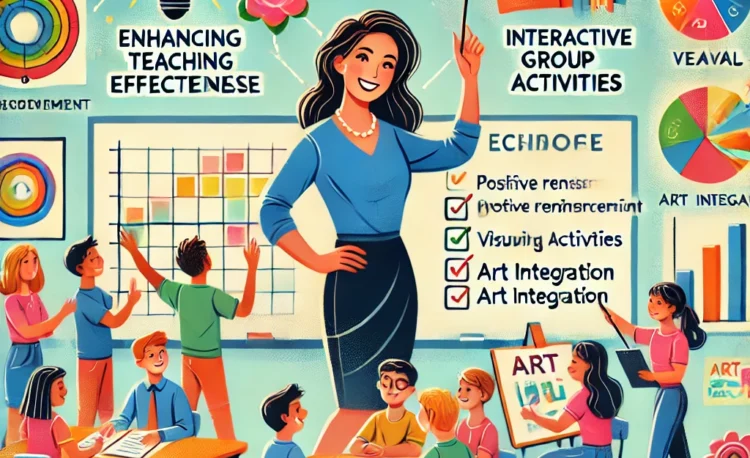Effective teaching requires a combination of pedagogical skills, classroom management techniques, and a deep understanding of student engagement. Here are some strategies to help teachers create dynamic and engaging learning environments:
Student Engagement:
- Create a Positive Classroom Climate: Foster a supportive and inclusive environment where students feel valued and respected.
- Relate to Students’ Interests: Connect the curriculum to students’ personal interests and experiences to make learning more relevant.
- Use Interactive Activities: Incorporate group work, discussions, and hands-on activities to keep students actively involved.
- Provide Opportunities for Choice: Give students options in assignments or projects to foster a sense of autonomy and ownership.
- Offer Positive Reinforcement: Use praise, rewards, and encouragement to motivate students and reinforce desired behaviors.
Classroom Management:
- Establish Clear Expectations: Clearly communicate classroom rules and expectations from the beginning.
- Use Positive Discipline: Focus on positive reinforcement and avoid punitive measures whenever possible.
- Manage Time Effectively: Plan lessons efficiently and allocate time wisely to ensure that all topics are covered.
- Create Routines: Establish consistent routines for daily tasks to maintain a structured classroom environment.
- Address Behavior Issues Proactively: Address behavioral concerns promptly and privately to avoid disruptions.
Time Management:
- Prioritize Tasks: Identify and prioritize the most important tasks to ensure effective use of time.
- Set Realistic Goals: Set achievable goals for yourself and your students to avoid feeling overwhelmed.
- Use Time Management Tools: Utilize tools like planners, calendars, or apps to organize your time effectively.
- Minimize Distractions: Create a focused work environment and eliminate unnecessary distractions.
Gesture and Non-Verbal Communication:
- Use Gestures Effectively: Use hand gestures and facial expressions to emphasize key points and engage your students visually.
- Maintain Eye Contact: Maintain eye contact with your students to show that you are attentive and engaged.
- Use Body Language: Project confidence and enthusiasm through your body language.
Concept Clarity:
- Explain Concepts Clearly: Use simple language and examples to explain complex concepts.
- Provide Visual Aids: Use diagrams, charts, and other visual aids to enhance understanding.
- Encourage Questions: Encourage students to ask questions and clarify any doubts.
- Relate to Real-World Examples: Connect concepts to real-world situations to make them more relevant.
Use of Art Integration:
- Enhance Creativity: Incorporate art activities into your lessons to stimulate creativity and critical thinking.
- Improve Learning: Art integration can help students visualize concepts, remember information, and develop problem-solving skills.
- Differentiated Instruction: Art activities can provide opportunities for differentiated instruction to cater to students’ diverse learning styles.
By implementing these strategies, teachers can create engaging and effective learning environments that foster student success.

 Entry
Entry